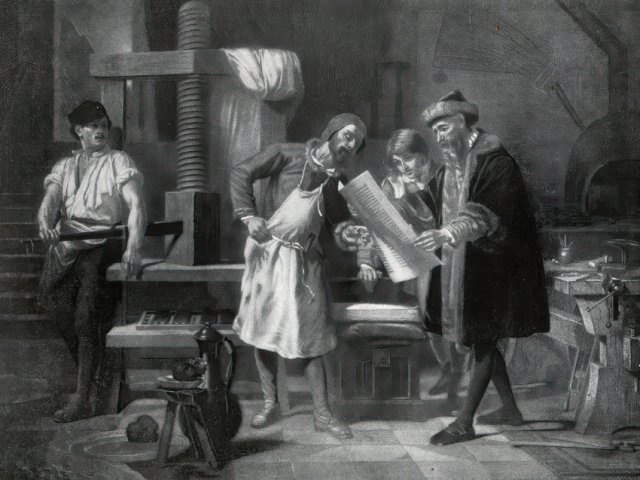The Printing Press: How One Invention Changed the World of Books and Learning
Discover how the printing press revolutionized communication, education, and the spread of ideas in this fun and educational article for students

📚 The Printing Press: The Invention That Spread Knowledge to the World
🌟 Introduction and Summary
Have you ever stopped to think about how books, newspapers, and magazines are made? Today, they’re printed in minutes by machines. But long ago, every word had to be written by hand — a very slow process! That all changed with the invention of the printing press.
The printing press is one of the most powerful inventions in human history. It helped spread knowledge, ideas, and stories across the world. Without it, we wouldn’t have public libraries, newspapers, or even school textbooks like the ones you use today.
🧬 Classification and Scientific Background
The printing press is an information technology invention that uses mechanical pressure to transfer ink onto paper. It was the first machine that allowed for mass production of written materials, meaning people could make many copies of books quickly and cheaply.
It uses basic physics concepts like force and pressure, combined with engineering and design, to press letters and images onto a page using movable type — small metal blocks with letters on them.
🏛️ A Brief History of the Printing Press
🧑🔬 Who Invented the Printing Press?
The first mechanical movable type printing press was invented by Johannes Gutenberg in the 1450s in Germany. Gutenberg used metal letters, called type, arranged to form words. He then pressed these letters onto paper using ink and a wooden press.
Before Gutenberg, printing existed in parts of Asia, especially in China, where people used wooden blocks carved with images and text. However, Gutenberg’s press was the first to use movable type, which made printing much faster and easier.
📖 What Was the First Book Printed?
Gutenberg's most famous work was the Gutenberg Bible, printed around 1455. It was one of the first major books ever made using the new printing method.
🛠️ How the Printing Press Works
Here’s how Gutenberg’s press worked:
- Movable Type: Each letter was cast from metal and arranged to form words and sentences.
- Ink Application: Ink was rolled onto the type.
- Paper Placement: A sheet of paper was placed carefully on top.
- Pressing: A screw-like press applied pressure to the paper, transferring the ink from the type.
- Printing Multiple Pages: The type could be rearranged to print a different page, and the process was repeated.
This method was much faster than copying texts by hand, which could take months or even years!
🌍 Impact on Society and the World
The printing press changed the world in many amazing ways:
- Books Became Cheaper: Books were no longer rare and expensive.
- More People Learned to Read: As books became available, literacy rates improved.
- Ideas Spread Faster: Scientists, thinkers, and writers could share their ideas with many more people.
- Education Improved: Schools and universities had better access to textbooks and learning materials.
- Revolutions and Movements: The press helped spread new ideas that led to the Renaissance, the Reformation, and the Scientific Revolution.
🧠 Why It Still Matters Today
Even in our digital age, the printing press is still important. It laid the foundation for the way we share information — from books and newspapers to e-books and online articles. Without it, the world would be much less connected.
👨🏫 Famous Figures Related to the Printing Press
- Johannes Gutenberg – Inventor of the movable type printing press.
- William Caxton – Brought the printing press to England in 1476.
- Martin Luther – Used the press to spread his writings during the Protestant Reformation.
- Isaac Newton & Galileo – Their scientific works were printed and shared widely because of the press.
📘 Kid-Friendly Summary
The printing press made it possible to print books quickly and share knowledge with the world. It was invented by Johannes Gutenberg in the 1400s and changed everything from education to science and religion. Thanks to the printing press, more people learned to read and new ideas could spread like never before.
⭐ Interesting Facts
- Gutenberg’s press could print about 250 pages per day, much faster than writing by hand!
- Early printed books are called incunabula, which means “books from the cradle of printing.”
- The printing press is often listed among the top 5 inventions in human history.
- The first newspaper printed using a press appeared in Germany in 1605.
- Today’s high-speed digital presses can print thousands of pages per minute!
🔑 Key Takeaways
- The printing press allowed for fast, low-cost book production.
- Johannes Gutenberg invented the movable type press around 1450.
- It led to a rise in literacy, education, and global sharing of ideas.
- It helped start major world events like the Reformation and the Scientific Revolution.
- Printing technology continues to evolve today with digital and 3D printing.
📚 Vocabulary Words
| Word | Definition |
|---|---|
| Movable Type | Small metal letters that can be arranged to form words |
| Press | A machine that uses pressure to imprint ink onto paper |
| Ink | Colored liquid used for writing or printing |
| Literacy | The ability to read and write |
| Revolution | A major change in society, politics, or ideas |
| Incunabula | Books printed before the year 1501 using movable type |


















































